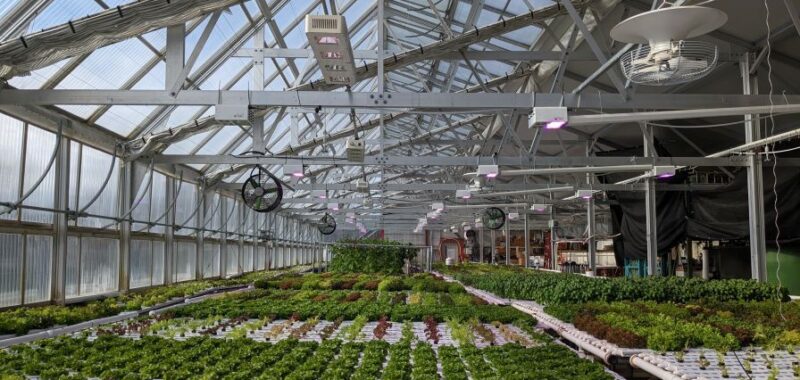
Greenhouse climate smart farming | Gretchen Schimelpfenig
Recently, our sister brand of CEAg World (under the Meister Media Worldwide umbrella) looked at the rapid development of “smart” greenhouses in the agricultural and horticultural industry. Their analysis covers both the advantages that smart greenhouses bring to growers through cutting-edge technologies and how the market is expected to balloon in the coming years. Here’s a look at what they had to say:
According to Global Market Insights (GMI), smart greenhouses are proving to be a game-changer in modern agriculture by integrating advanced technologies to optimize crop growth and resource management. Based on recent market projections, the smart greenhouse market is poised to exceed $4.5 billion by 2032. This anticipated growth underscores the increasing adoption of smart agricultural practices aimed at enhancing food production efficiency and sustainability.
The Rise of Smart Greenhouses: A Technological Marvel
Smart greenhouses leverage cutting-edge technologies such as IoT (Internet of Things), AI (Artificial Intelligence), and data analytics to create a controlled environment conducive to plant growth. Unlike traditional greenhouses, which rely heavily on manual monitoring and intervention, smart greenhouses utilize sensors, automated systems, and software to monitor and control environmental factors like temperature, humidity, light, and CO2 levels.
The primary driver behind the burgeoning smart greenhouse market is the growing demand for food security and sustainable agricultural practices. With the global population projected to reach nearly 10 billion by 2050, traditional farming methods face challenges in meeting the food demand without exhausting natural resources. Smart greenhouses offer a viable solution by enabling year-round cultivation, optimizing resource use, and minimizing waste.
Key Technologies Driving the Market
1. IoT and Sensor Technology: IoT devices play a crucial role in smart greenhouses by providing real-time data on various environmental parameters. Sensors monitor soil moisture, temperature, and nutrient levels, enabling precise control over irrigation and fertilization. This data-driven approach ensures optimal plant growth conditions, leading to higher yields and reduced water and fertilizer usage.
2. Artificial Intelligence: AI algorithms analyze data collected from sensors and predict crop health and growth patterns. Machine learning models can forecast weather conditions, pest outbreaks, and other variables, allowing farmers to take proactive measures. AI-powered systems can also automate tasks like ventilation, shading, and lighting, ensuring a stable environment for crops.
3. Automated Systems: Smart greenhouses often incorporate automated systems for irrigation, climate control, and lighting. These systems adjust settings based on real-time data, optimizing resource usage and minimizing human intervention. For instance, automated irrigation systems can adjust water flow based on soil moisture levels, preventing overwatering and conserving water.
Market Drivers and Challenges
The smart greenhouse market is propelled by several factors, including the increasing need for efficient water usage, the growing popularity of organic farming, and advancements in greenhouse technology. Additionally, government initiatives promoting sustainable agriculture and food security are expected to further boost market growth.
However, the market also faces challenges. High initial investment costs and the complexity of integrating advanced technologies into existing agricultural systems can deter small and medium-sized farmers. Moreover, the need for technical expertise to manage and maintain these systems poses a barrier to widespread adoption.
Regional Insights
The Asia-Pacific region is anticipated to lead the smart greenhouse market, driven by rapid urbanization, a growing population, and increasing awareness of sustainable farming practices. Countries like China, Japan, and South Korea are investing heavily in agricultural technology to enhance food production. In North America and Europe, the market is bolstered by technological advancements and a strong emphasis on environmental sustainability.
Future Expansion
The smart greenhouse market’s expected growth to $4.5 billion by 2032 signifies a paradigm shift in agriculture. By harnessing technology, smart greenhouses offer a promising solution to the challenges of traditional farming, including climate variability, resource scarcity, and food security. As the world continues to grapple with the effects of climate change and population growth, the adoption of smart agricultural practices, epitomized by smart greenhouses, is likely to become increasingly vital. This market’s expansion not only represents technological progress but also a commitment to sustainable and efficient food production for future generations.
The original article can be found on the CEAg World website, along with more news coverage of controlled environment agriculture.

